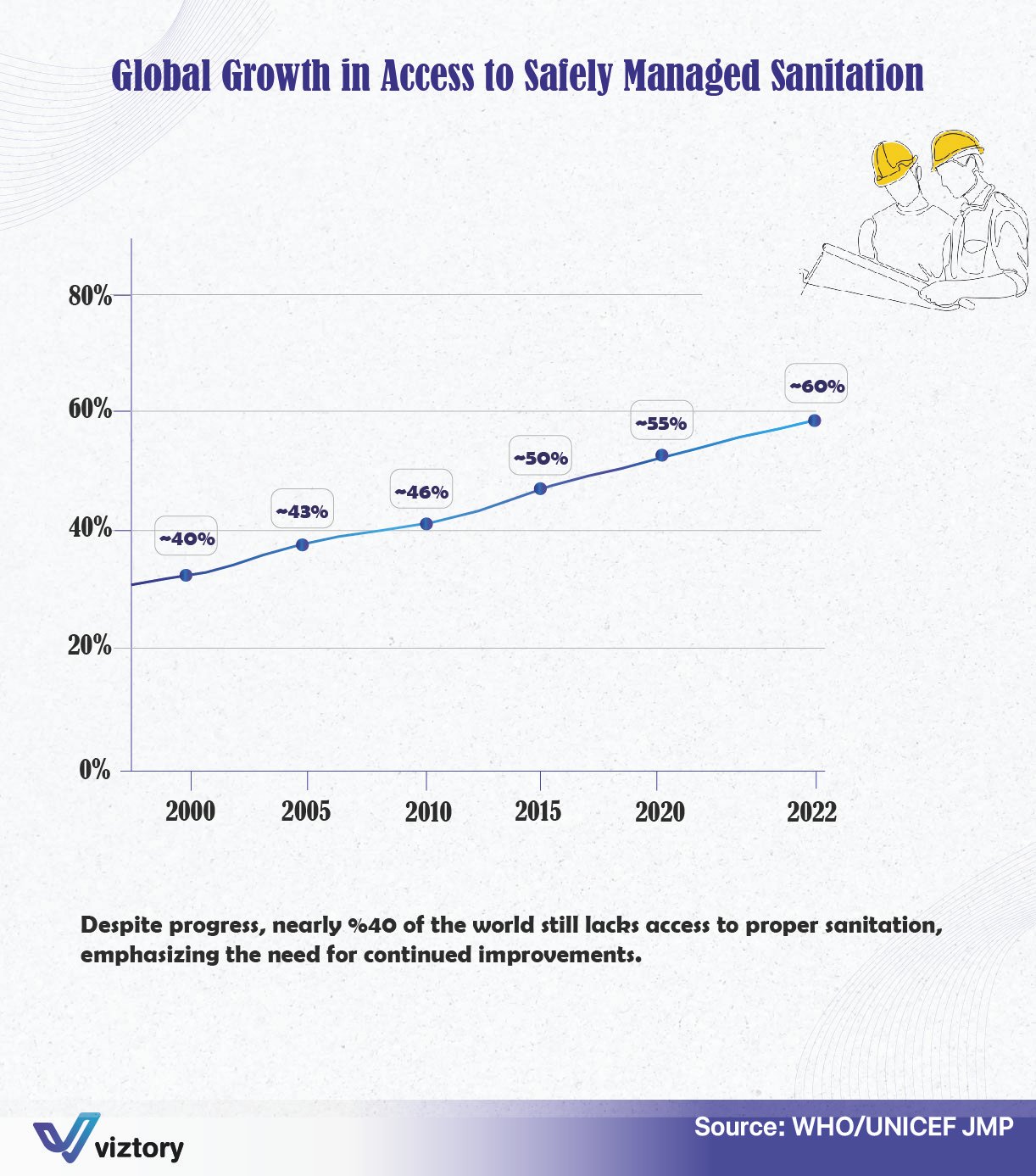Global Growth in Access to Safely Managed Sanitation: A Vital Component of Healthcare
-
Sep, Tue, 2024
Global Growth in Access to Safely Managed Sanitation: A Vital Component of Healthcare
The graph in the image illustrates the steady increase in global access to safely managed sanitation from 2000 to 2022, rising from approximately 40% in 2000 to about 60% in 2022. Despite this progress, a significant portion of the global population—nearly 40%—still lacks access to proper sanitation, highlighting the need for continued improvements in this crucial area. Sanitation is not just a basic necessity; it plays an integral role in public health and the overall healthcare system.
Sanitation and Healthcare: An Inseparable Link
Sanitation, particularly safely managed sanitation, is closely tied to health outcomes. Poor sanitation contributes to the spread of diseases such as cholera, diarrhea, and other waterborne infections that affect millions of people, especially in low- and middle-income countries. Ensuring proper sanitation facilities is essential for preventing these diseases, reducing healthcare burdens, and improving overall quality of life.
As healthcare systems focus on treating illnesses and preventing disease outbreaks, access to sanitation is a preventive measure that works at the foundation of public health. The lack of access to safely managed sanitation means healthcare systems in vulnerable regions face additional pressures from preventable diseases. For example, inadequate sanitation and hygiene contribute to 1.6 million deaths globally each year, mostly in children under five, according to the World Health Organization (WHO).
Progress and Challenges
The growth from 40% to 60% over two decades is a positive indicator that global initiatives and investments in sanitation infrastructure are yielding results. Organizations such as the WHO, UNICEF, and various governmental bodies have worked to improve access to sanitation through programs that focus on building infrastructure, raising awareness, and establishing community-based solutions.
However, with 40% of the world’s population still lacking access to safely managed sanitation, this progress remains insufficient. The situation is particularly dire in sub-Saharan Africa and parts of South Asia, where the lack of sanitation is compounded by poverty and rapid population growth. These regions face the dual challenge of expanding sanitation infrastructure and overcoming cultural or political barriers that slow progress.
The Path Forward: Integrating Sanitation with Healthcare Goals
To improve global healthcare outcomes, addressing sanitation issues must be a top priority. International health agendas, such as the United Nations’ Sustainable Development Goals (SDGs), emphasize the need for universal access to clean water and sanitation (Goal 6). Achieving this goal will require collaboration between governments, health organizations, and communities.
Investing in sanitation goes hand in hand with strengthening healthcare systems. When sanitation improves, healthcare costs related to preventable diseases decrease, leading to better health outcomes and more resilient communities. Furthermore, healthcare initiatives that integrate sanitation improvements into broader public health strategies, including maternal and child health programs, will yield more comprehensive and sustainable results.
Conclusion
While the world has made strides in expanding access to safely managed sanitation, the journey is far from over. For healthcare systems to thrive and for populations to enjoy better health outcomes, access to proper sanitation must be universally prioritized. The continued focus on sanitation infrastructure, combined with education and public health initiatives, will play a key role in reducing the global disease burden and fostering healthier, more sustainable communities.

